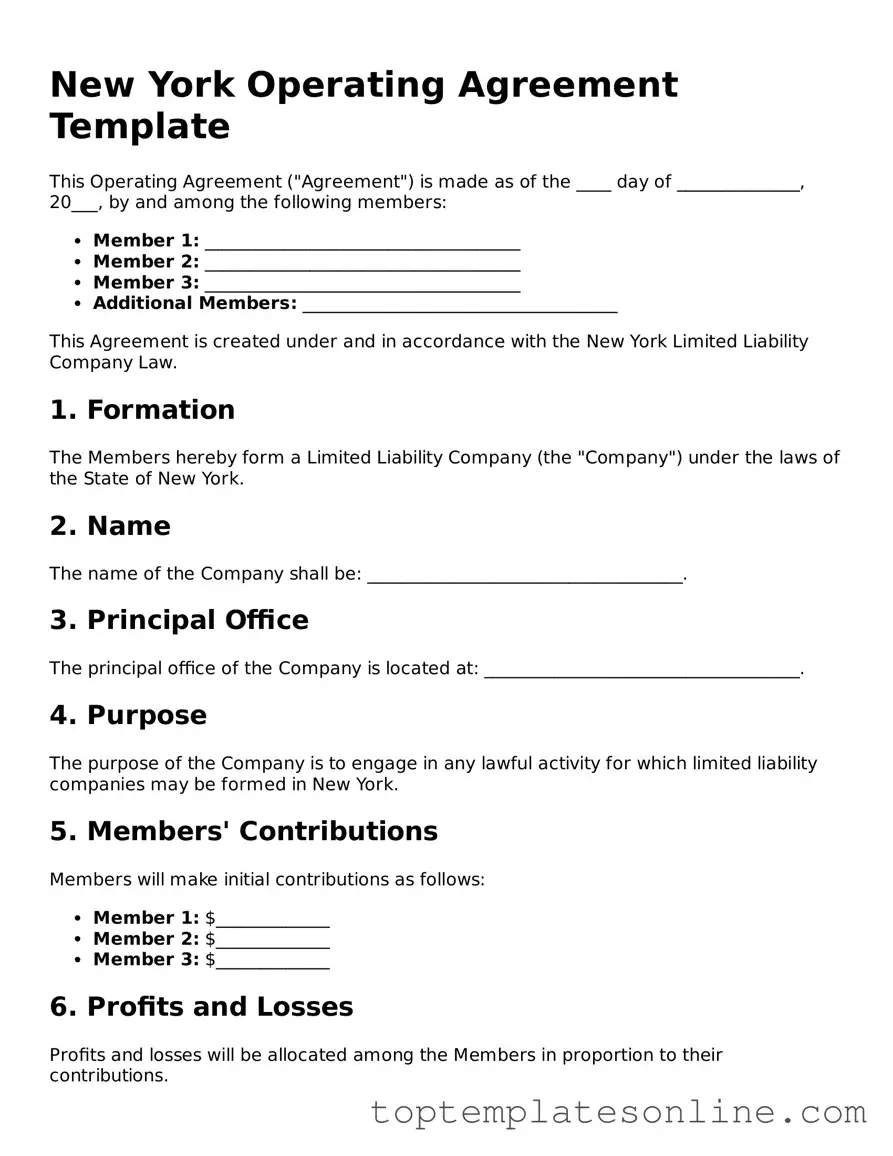Blank Operating Agreement Template for New York State
The New York Operating Agreement form is a crucial document for Limited Liability Companies (LLCs) operating in New York. This agreement outlines the management structure, responsibilities of members, and the operational procedures of the LLC. Understanding its importance can help ensure that your business runs smoothly and in compliance with state regulations.
Customize Operating Agreement Here
